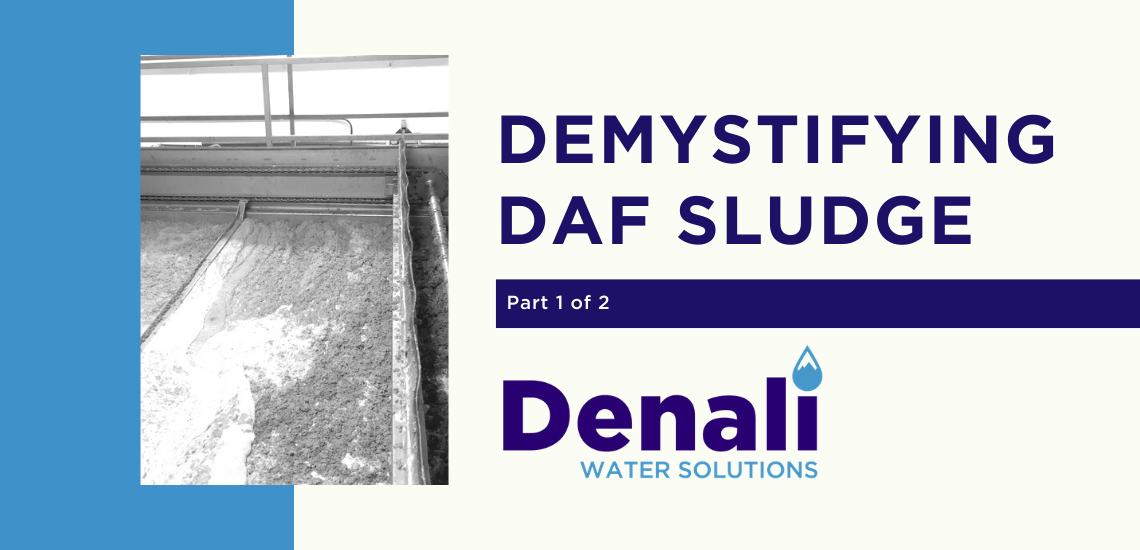
Have you ever twisted the top on a new bottle of soda to see bubbles appear, seemingly out of nowhere, and rise to the top? Do you remember the sound you heard when you twisted the cap? Odds are you know exactly what I’m talking about.
But have you ever wondered exactly what’s going on inside that bottle? If you’ve spent time around a protein processing plant or have worked at a wastewater treatment facility, you probably know the answer. Let’s take a closer look.
Why Is DAF, or Dissolved Air Flotation, Necessary?
The wastewater profession and its lingo are chock-full of acronyms. One of the best-known for a wastewater operator at a meat processing facility is “DAF,” pronounced “daf” or, sometimes, “D-A-F.” It stands for Dissolved Air Flotation, and it basically works like your soda bottle.
To understand this better, let me back up a little. Inside a poultry processing facility, meat is tossed, turned, tumbled, sliced, diced, washed, and cut up. Throughout this process, very small bits of meat, fat, and other proteins and fibrous particles are detached. This is the beginning of a long journey for these small particles.
The particles flow to a drain and mingle with other discarded parts of the chicken. Along with these larger chicken parts, like feet, heads, entrails, and feathers, the small particles work their way to a screening room. Here, we often find large, rotating screens tasked with recovering valuable proteins, attached fats, and feathers. These recovered materials are sent to rendering facilities and typically converted into different kinds of meals to be used as animal feed ingredients. The screens capture particles in the range of two-hundredths (0.02) to four hundredths (0.04) of an inch and larger. The particles that pass through the screens then flow to wastewater for further treatment.
While it may sound like this water is a typical wastewater stream at this point, in fact, most conventional aerobic wastewater treatment plants cannot treat this water directly due to its high concentration of solids and nutrients. In most cases, to meet all state and federal discharge limits, additional reductions in loading must be achieved before reaching the wastewater plant’s biological treatment system.
How the DAF Does Its Job
Let’s come back around to the bottle of soda and the DAF. A DAF and its bubbles, like the ones you see rising to the top of your soda, will be just the ticket for cutting the loading to the wastewater by 70-90%!
What you are observing when you open that bottle of carbonated drink is a result of a release of pressure built up inside the bottle. At the factory, the liquid was carbonated, meaning that CO2 was dissolved into your drink under pressure. Once you release that pressure, the CO2 starts to form gas bubbles, or, to be more technical, comes out of solution. This is exactly how a DAF works, only it uses ambient air injected directly into a waste stream under pressure to create the dissolved air, which will later be depressurized to reform gas bubbles.
But what is this accomplishing? Good question.
Remember the small bits of proteins and fats that made it through the screens? When pressure is released inside the DAF unit, the dissolved air starts to reform into very small air bubbles. As these bubbles rise to the surface, they attach to the small particles of solids suspended in the water, bringing them together and carrying them to the top. By doing this, the DAF system has removed the small particles that a screen could not.
Cool! What Now?
Now that we have formed a semi-solid slurry (usually referred to as DAF Sludge or just Sludge), the DAF system scrapes the sludge into a collection hopper or tank, where it is ready for Denali to take over and turn this waste into gold. Not literal gold, of course, but something of value, for sure.
Now you understand that DAF Sludge is simply small bits of proteins, fats, and fibrous materials that could not be removed by simple mechanical means. In the next blog, we will continue looking at the journey of these small particles and explain that, while small, they can still achieve greatness!
Until then, the next time you pop the top on your soda, remember there is more to the fizz than just a tingle to the taste buds.
To learn more about Denali’s beneficial use program, visit https://www.denalicorp.com/services/beneficial-use/.
